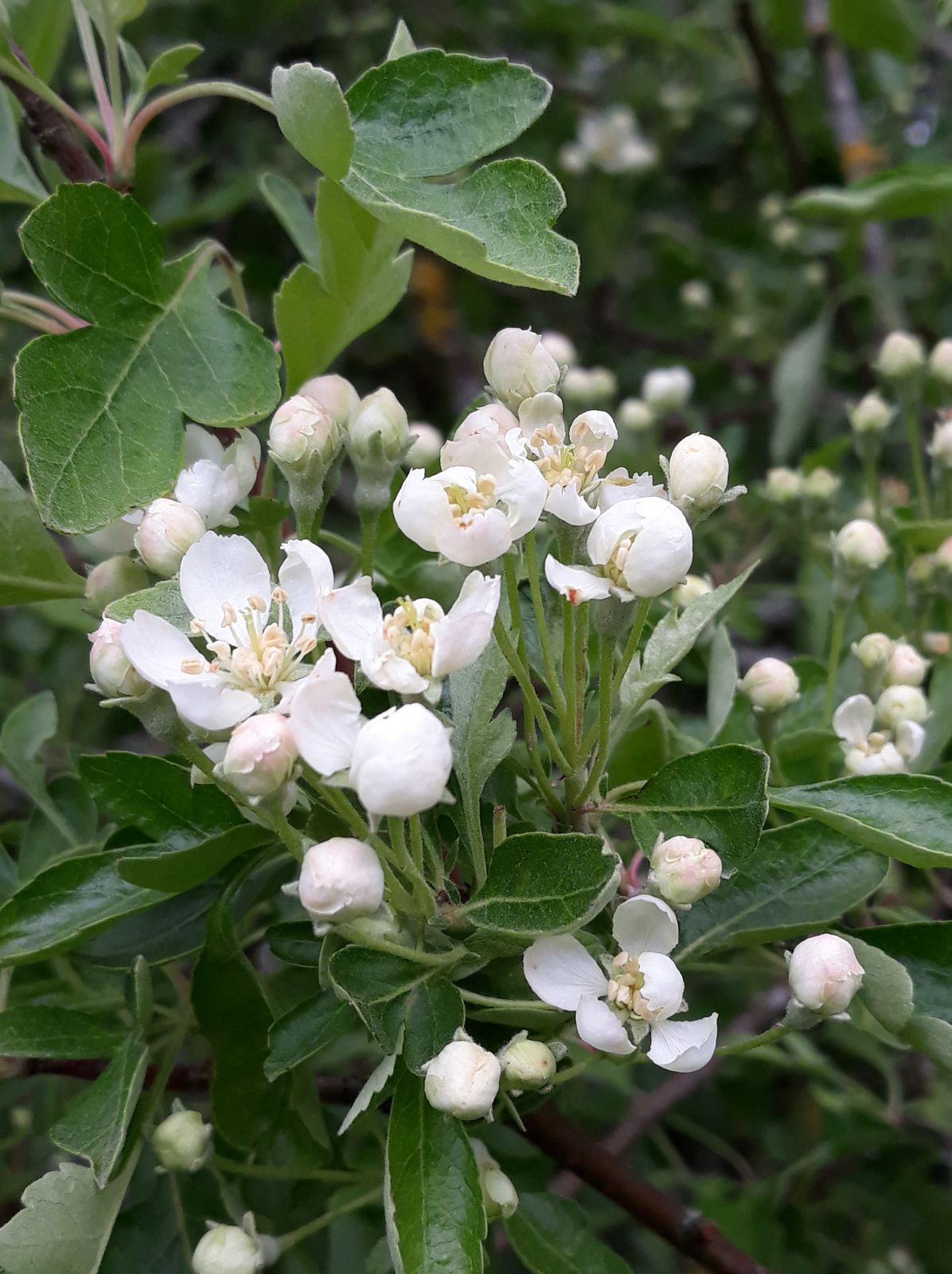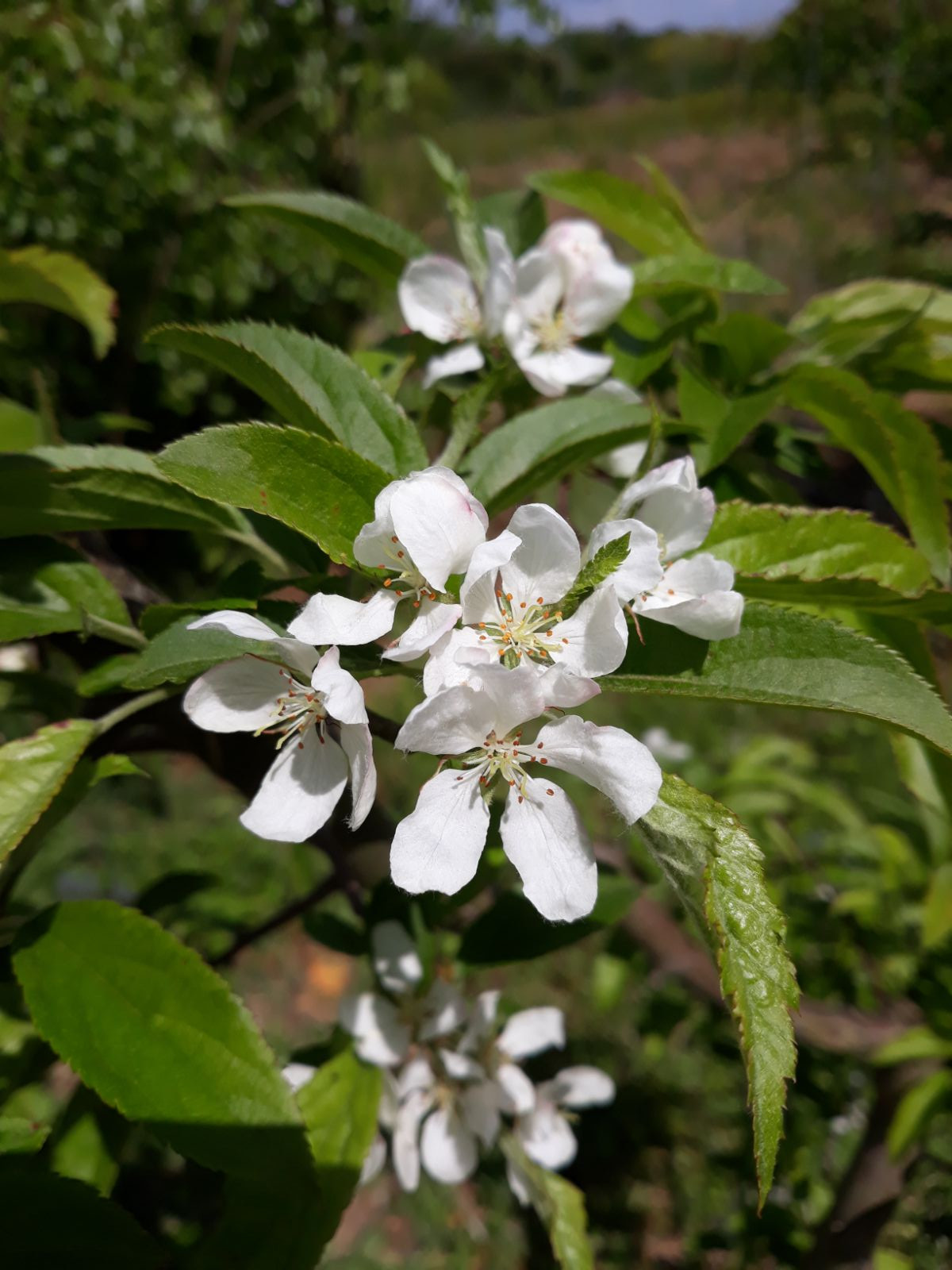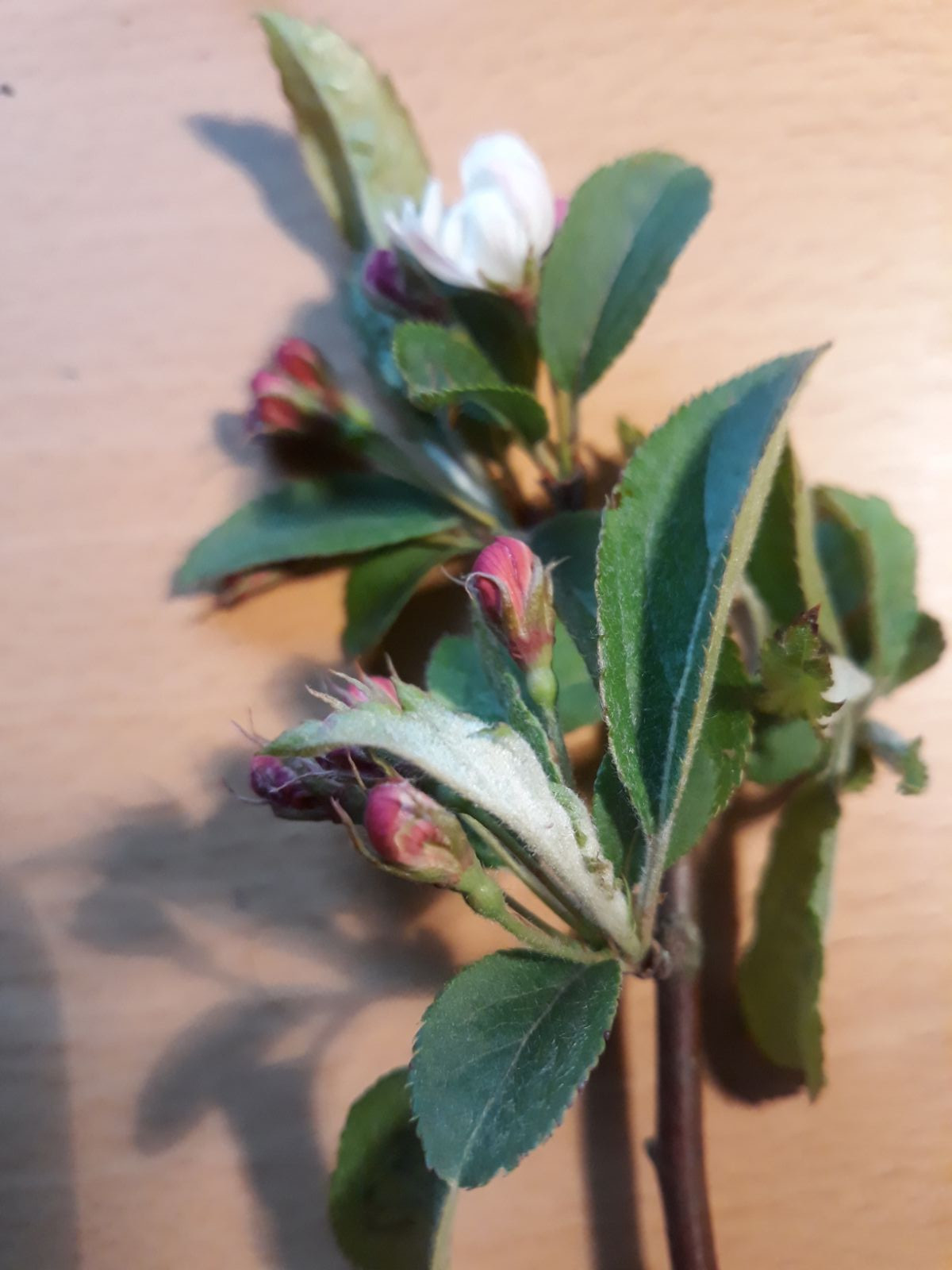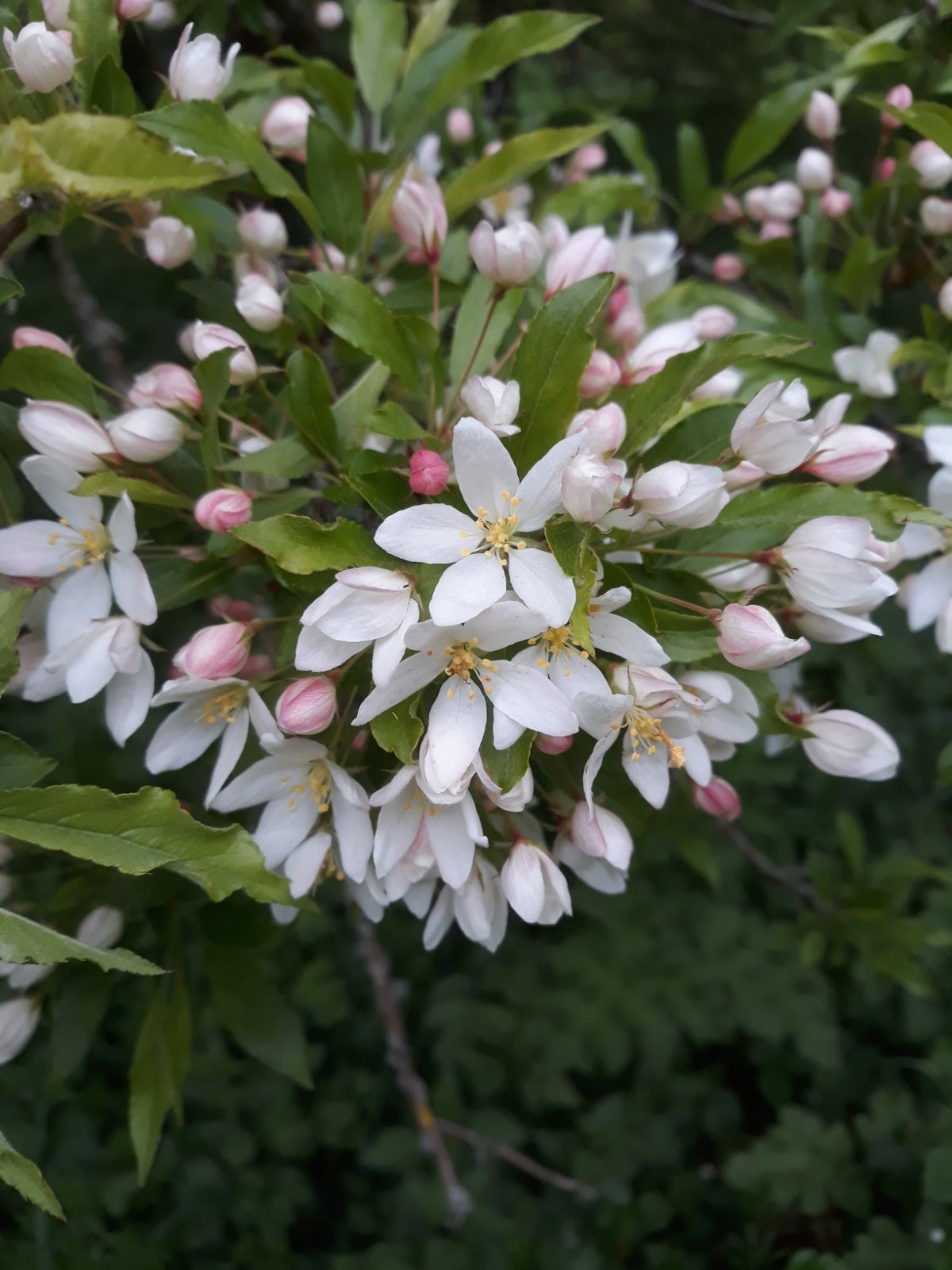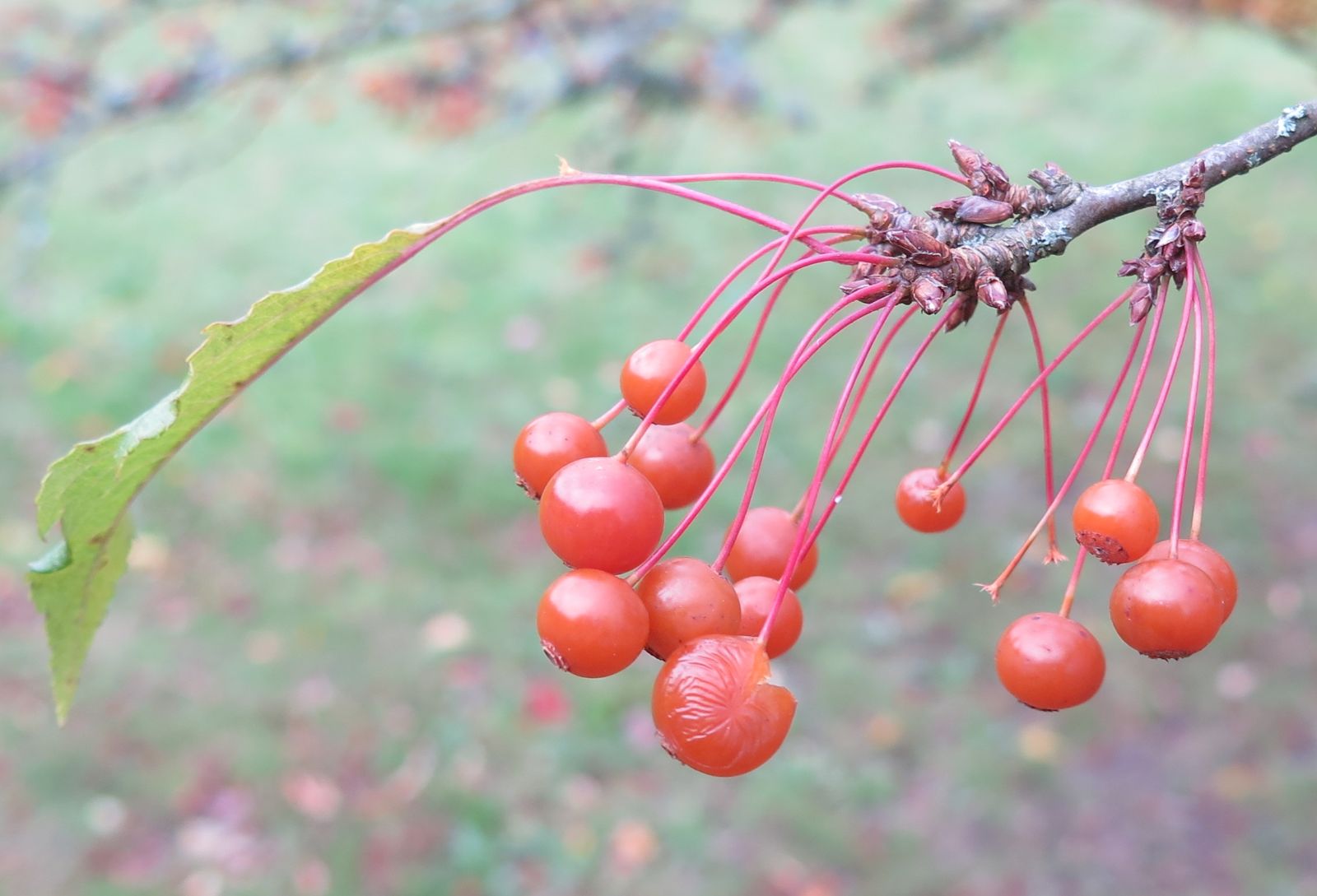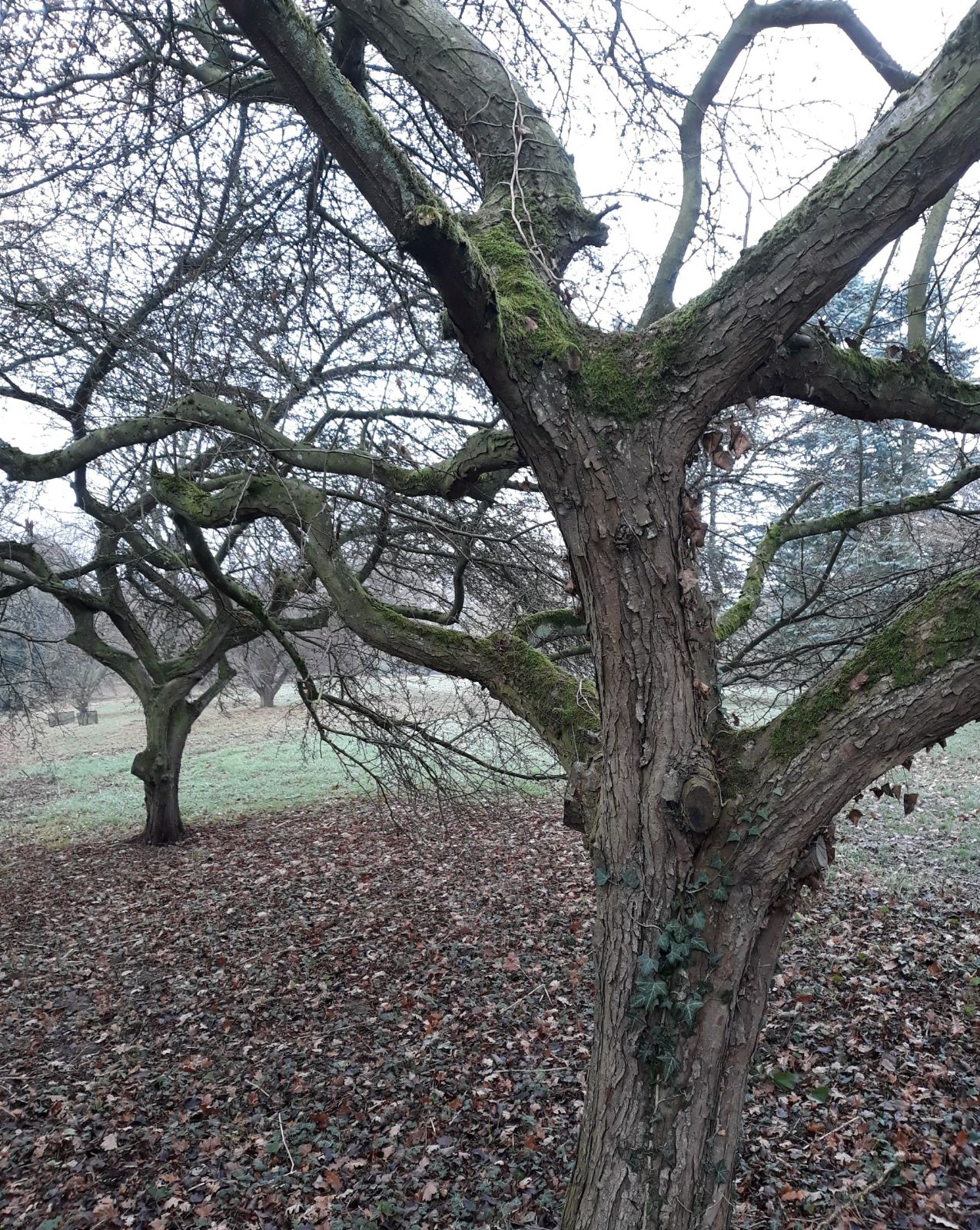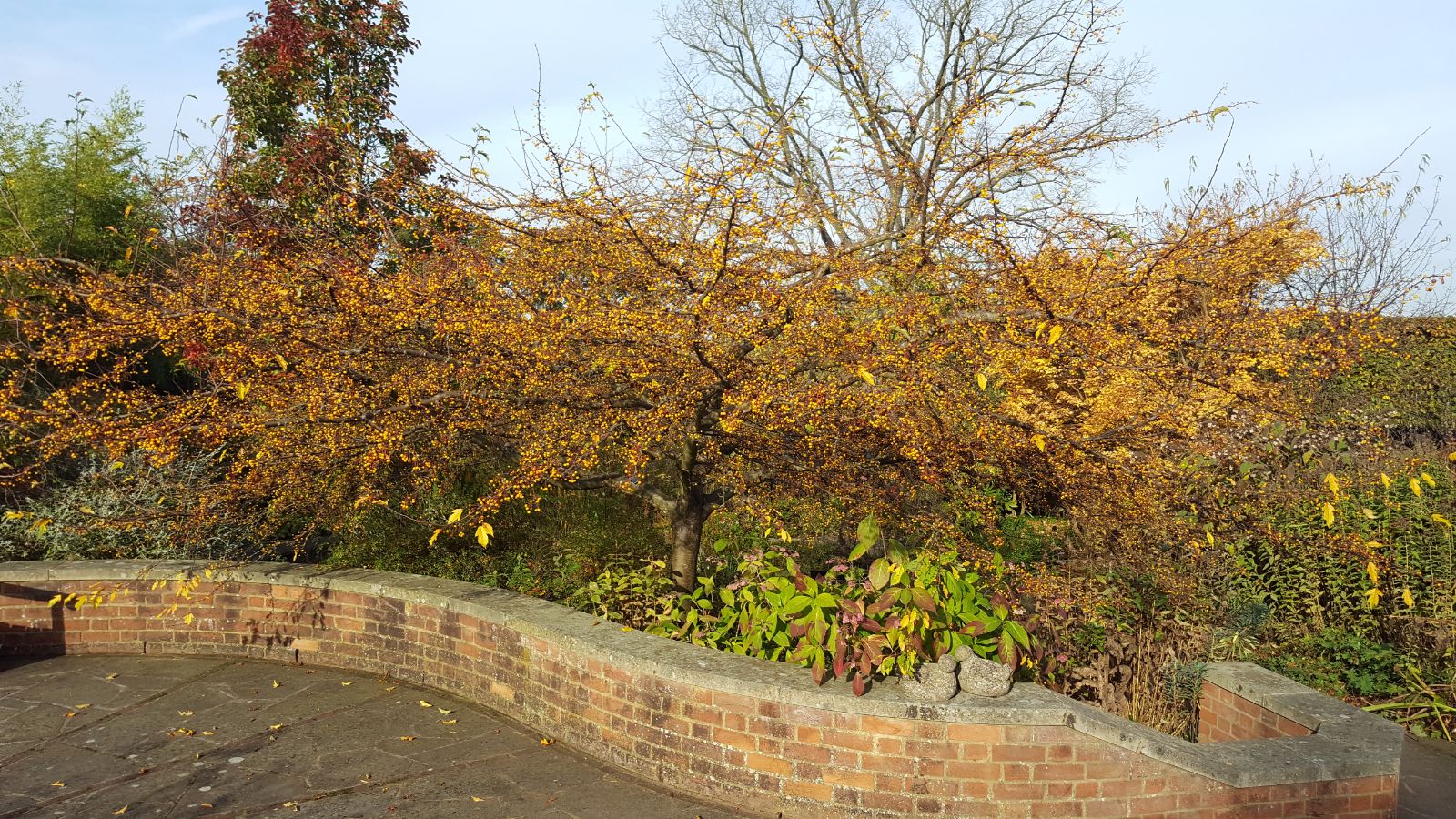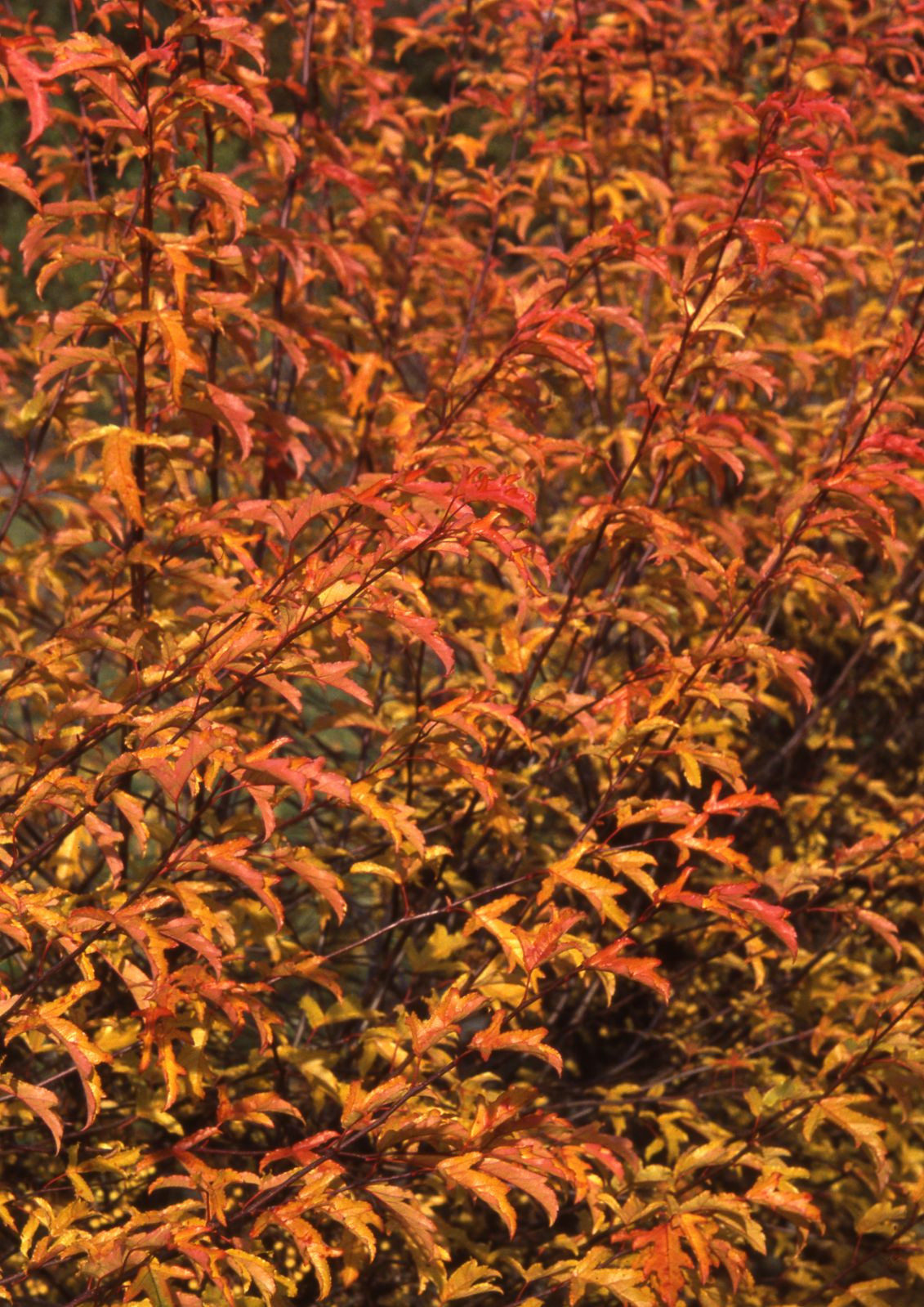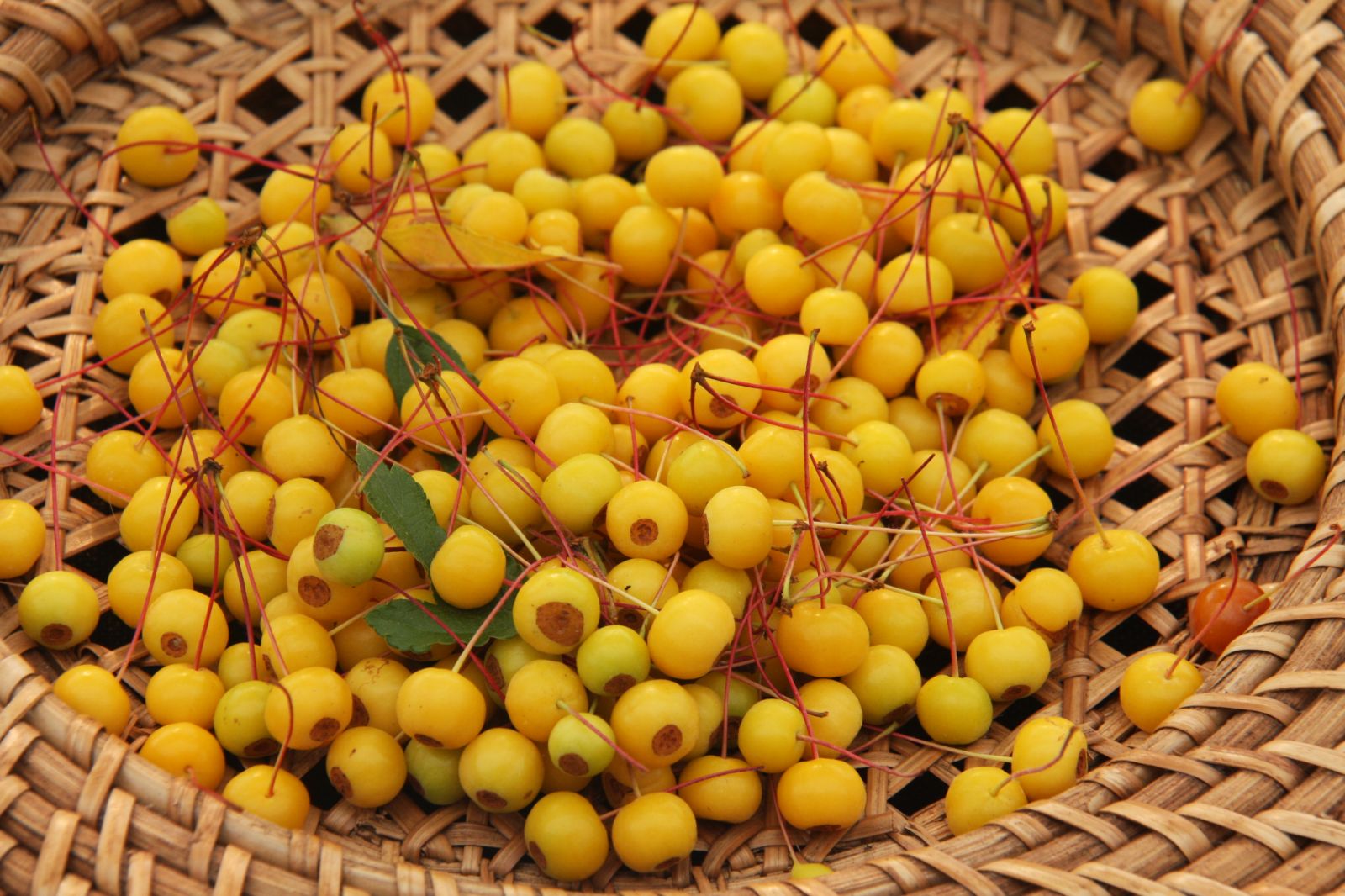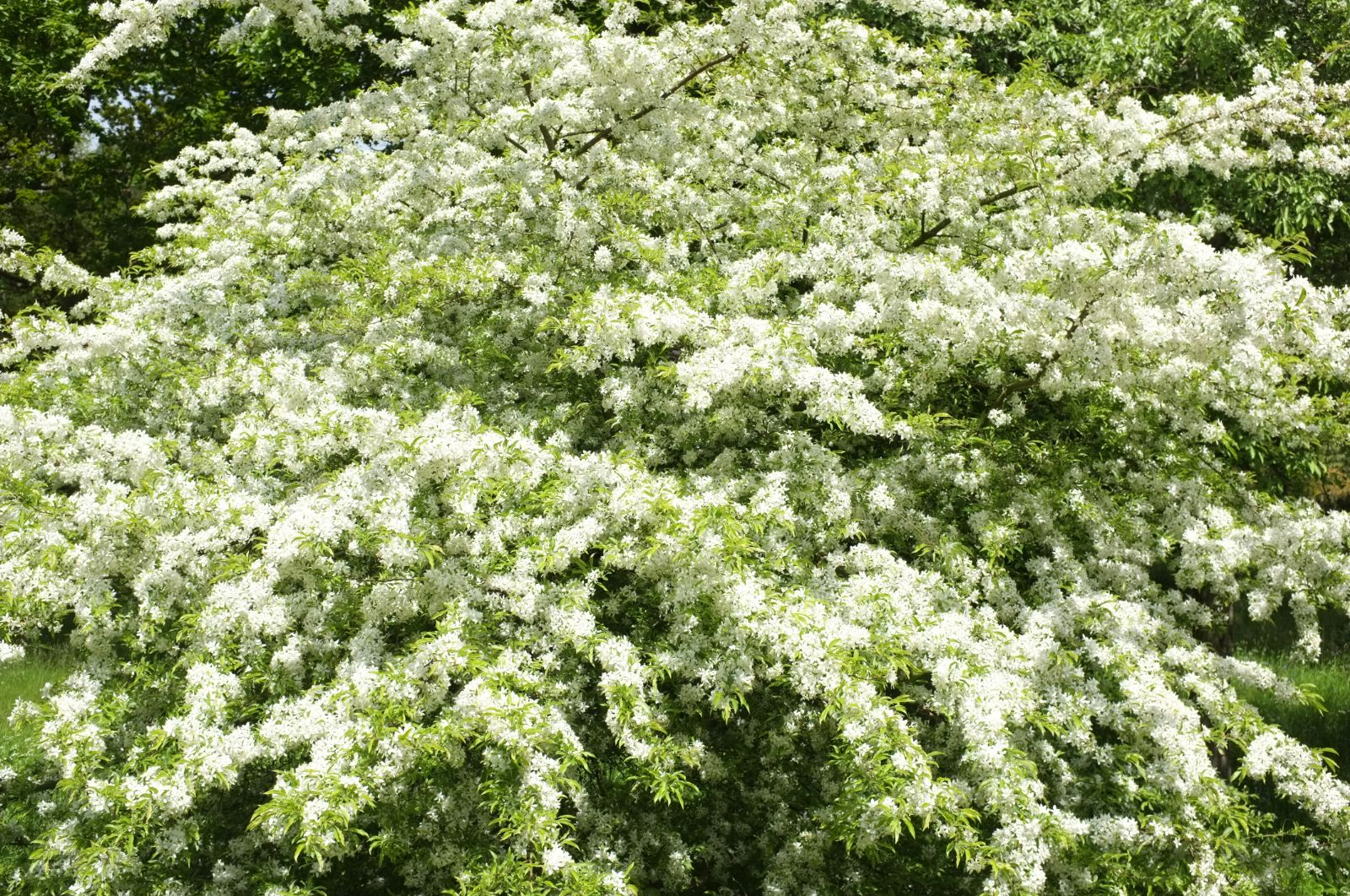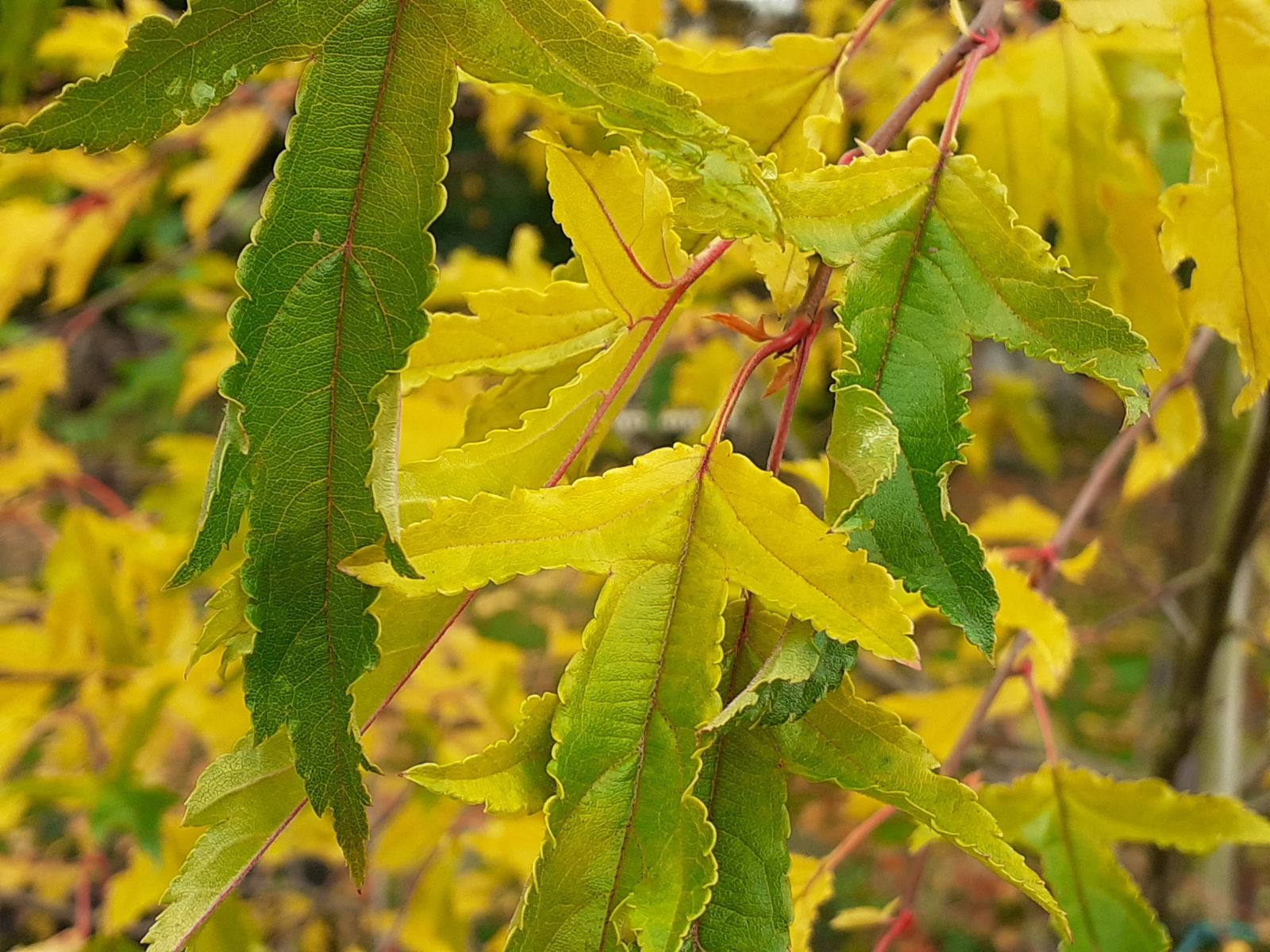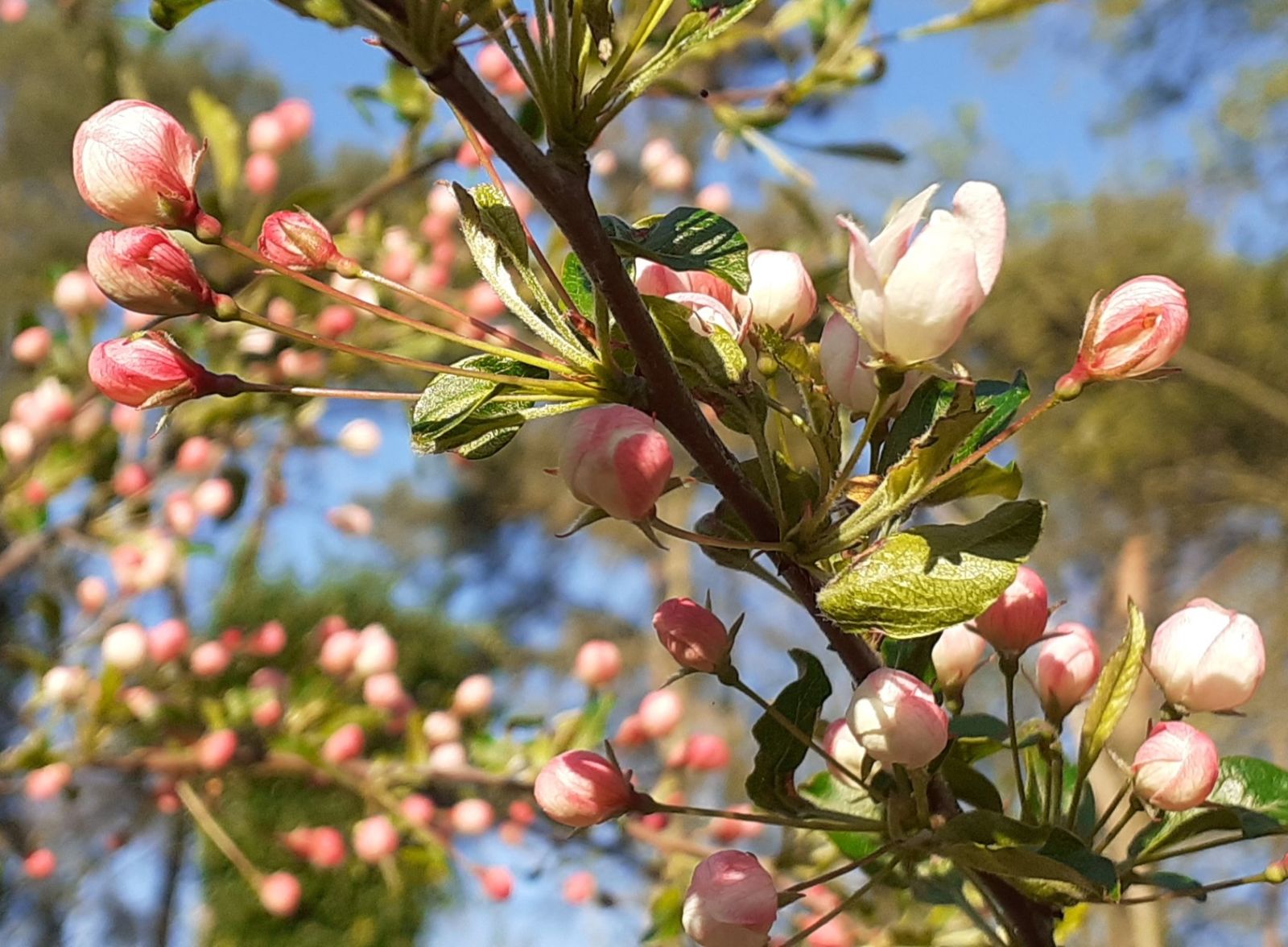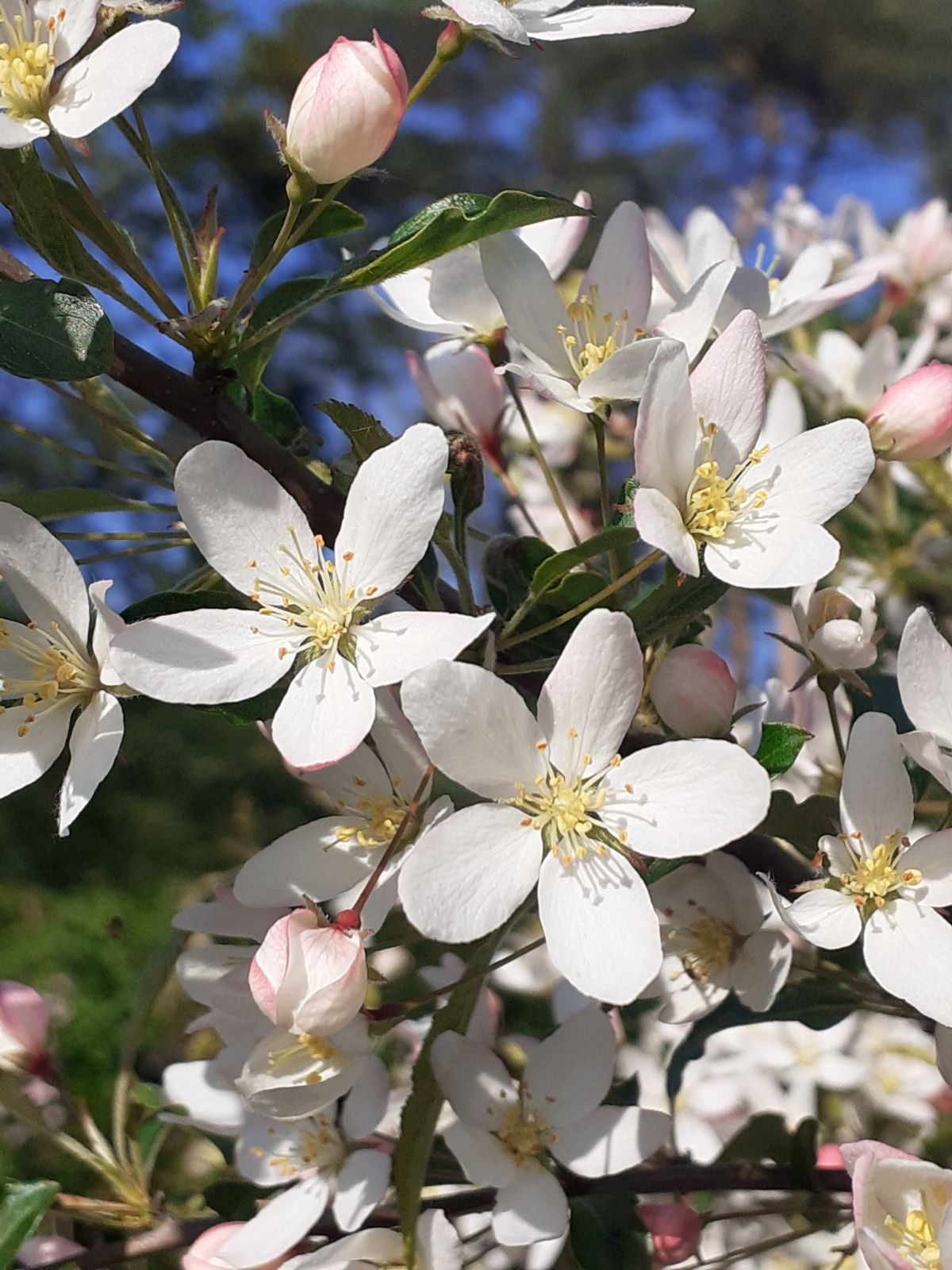Malus transitoria
Sponsor
Kindly sponsored by
Francine: 'after many informative Tours and Study Days with the IDS I feel it only fitting to help and promote such a wonderful organisation'
Credits
Julian Sutton (species), Nick Dunn (cultivars) (2021)
Recommended citation
Sutton, J. & Dunn, N. (2021), 'Malus transitoria' from the website Trees and Shrubs Online (treesandshrubsonline.
Genus
Common Names
- hua ye hai tang
Synonyms
- Pyrus transitoria Batal.
- Sinomalus transitoria (Batal.) Koid.
Infraspecifics
Other taxa in genus
- Malus × adstringens
- Malus angustifolia
- Malus × arnoldiana
- Malus asiatica
- Malus × astracanica
- Malus × atrosanguinea
- Malus baccata
- Malus bhutanica
- Malus × brevipes
- Malus chitralensis
- Malus coronaria
- Malus crescimannoi
- Malus Cultivars A-B
- Malus Cultivars C
- Malus Cultivars D-F
- Malus Cultivars G-I
- Malus Cultivars J-K
- Malus Cultivars L-M
- Malus Cultivars N-Q
- Malus Cultivars R
- Malus Cultivars S
- Malus Cultivars T-Z
- Malus dasyphylla
- Malus × dawsoniana
- Malus domestica
- Malus doumeri
- Malus florentina
- Malus × floribunda
- Malus fusca
- Malus × gloriosa
- Malus halliana
- Malus × hartwigii
- Malus × heterophylla
- Malus honanensis
- Malus hupehensis
- Malus ioensis
- Malus kansuensis
- Malus kirghisorum
- Malus komarovii
- Malus × magdeburgensis
- Malus × micromalus
- Malus × moerlandsii
- Malus montana
- Malus ombrophila
- Malus orientalis
- Malus × platycarpa
- Malus praecox
- Malus prattii
- Malus prunifolia
- Malus × purpurea
- Malus × robusta
- Malus rockii
- Malus Rootstock Cultivars
- Malus Rosybloom Cultivars
- Malus × scheideckeri
- Malus sieversii
- Malus sikkimensis
- Malus × soulardii
- Malus spectabilis
- Malus spontanea
- Malus × sublobata
- Malus sylvestris
- Malus toringo
- Malus trilobata
- Malus tschonoskii
- Malus turkmenorum
- Malus yunnanensis
- Malus × zumi
Shrub or small tree to 8 m. Branchlets purple, tomentose when young. Buds purple, ovoid, tomentose. Leaf blade ovate, 2.5–5 × 2–4.5 cm, tomentose beneath and sometimes also above; base rounded to cuneate; apex acute; margin with irregular teeth, later-emerging leaves usually 3–5 lobed; petiole 1.5–3.5 cm, tomentose. Inflorescence a 3–6-flowered corymb; pedicels 1.5–2 cm, tomentose. Flowers 1–2 cm in diameter, in late spring (May in the wild). Sepals triangular-ovate, 3 mm, falling before the fruit is ripe; petals white, ovate, 8–10 mm; stamens 20–25, unequal, slightly shorter than petals; styles 3–5. Fruit bright red to yellow, September in the wild, rounded to pear shaped, 6–8 mm diameter. (Gu et al. 2003; Cullen et al. 2011; Bean 1981).
Distribution China Gansu, Nei Mongol, Qinghai, Shaanxi, Sichuan, E Xizang.
Habitat Thickets, hillsides, roadsides; 1500–3900 m asl.
USDA Hardiness Zone 4-8
RHS Hardiness Rating H6
Awards AGM
Conservation status Data deficient (DD)
As usually seen in gardens, this is a lovely wide-spreading, often umbrella-shaped tree, ideal as a lawn specimen for large gardens. White flowers from pink buds are followed by quantities of pea-sized, rich yellow fruits hanging on long pedicels (Edwards & Marshall 2019). However, there is real uncertainty around the identity of many cultivated specimens.
Malus transitoria has much in common with M. toringo and M. bhutanica in general appearance. Following Flora of China (Gu et al. 2003), it is distinguished by both leaf surfaces, as well as the pedicel at flowering time, being tomentose.
Even in his Latin description, from herbarium specimens collected in Gansu, Batalin (1892) reaches for the analogy of small peas when writing about the fruits, but he leaves no clue as to the relevance of the specific epithet, presumably from the Latin transitorius (either ‘having a way through’ or ‘short-lived’). Other poorly known, probably related taxa have since been described, and both diploids and triploids have been recorded. M. transitoria var. glabrescens T. T. Yu & T. C. Ku, from high altitude in eastern Tibet, has a glabrous underside to the leaf, and only sparsely hairy pedicels. M. transitoria var. centralasiatica (Vassilczenko) T. T. Yu, from high altitude in Gansu, Qinghai, and Shaanxi has more elongated fruits. The obscure M. setok Vassilczenko ‘might be an allied species or an ecotype of M. transitoria’ (Gu et al. 2003). Poorly understood variation of this sort makes the identification of cultivated material especially difficult, even without the question of whether sexual, outcrossing species have hybridized early in their cultivation history.
M. transitoria was introduced through seed sent to the Arnold Arboretum by the English plant collector William Purdom in 1911. Purdom, working in western Gansu, records that it was from ‘Tibetan country’ south west of Choni, ‘brought in by Tibetans’ (Sargent 1916). It seems that while the species was grown at the Arnold for many years, it is no longer there (Arnold Arboretum 2020).
Owen Johnson in The Tree Register (2020) wisely casts an aura of doubt around the identity of many British specimens, and highlights a clone probably distributed by the Hillier Nurseries as looking like M. toringo. John Grimshaw (pers. comm. 2020) compared specimens in flower at the Yorkshire Arboretum, one obtained from Hilliers in 1981, the other raised by Keith Rushforth from a Chinese commercial list of Gansu and Hunan seed, and believed by Rushforth to represent M. transitoria from Gansu. The Hillier plant looked ‘very like toringo’, matching it precisely in pedicel characters and in the size and narrow shape of the hypanthium; the flower of the ostensible Gansu plant looked ‘shorter necked’, with a very different hypanthium shape. The underside of the leaf was hairy only on the major veins and midrib in the Hillier plant; the Gansu tree was much more widely hairy as would be expected in M. transitoria. We cannot know for sure whether at some stage a cultivated stock has become mislabelled, or whether even a single round of seed-raising in cultivation has led to a hybrid – perhaps with M. toringo, a diploid sexual species – supplanting the species in general cultivation. Either way, it behoves us to approach trees in this group with open eyes and minds.
Other stocks exist: several specimens from a 1991 Sichuan collection (SICH 709) grow on the Chinese Hillside at RBG Edinburgh (Royal Botanic Garden Edinburgh 2020). Apart from the cultivar ‘Schmidtcutleaf’ (see ‘Cultivars S’), conventionally attributed to this species, M. transitoria seems to be almost unknown in North American cultivation. The drought tolerance and cold hardiness of genuine material (Gu et al. 2003) might make it a good prospect for the central United States.
Along with ‘Schmidtcutleaf’, two British cultivars (‘R.J. Fulcher’ and ‘Thornhayes Tansy’ – see ‘Cultivars R’ and ‘Cultivars T-Z’) are often placed here. While all show some characteristics of M. transitoria, ‘R.J. Fulcher’ is undoubtedly a hybrid, while ‘Thornhayes Tansy’ was raised from seed in the same fruit as both ‘R.J. Fulcher’ and another clear hybrid (K. Croucher, pers. comm. 2020). It would be unwise to claim any of these as unhybridized M. transitoria.
'Carmen'
A selection raised and named after his wife by Eike Jablonski, who grew it from seed from Malus transitoria growing in Philippe de Spoelberch’s garden at Herkenrode, Belgium. As a young plant it stood out for its slower growth, remarkable orange-red autumn colour, and long-lasting fruits of vivid yellow, with a remarkable red peduncle. It is one of the later crabapples to flower. After 22 years the original tree has reached 4 × 6 m, suggesting that it has the typical flat-topped wide crown of commercial M. transitoria (E. Jablonski in litt. to Bob Askew, 2021).
A plant purchased by Bob Askew (pers. comm. 2023) from Boomkwekerij Pavia, Belgium, on semi-vigorous rootstock has made a vigorous, upright young tree, but in English conditions it has been difficult to see how it differs significantly from M. transitoria of commerce, and its leaves have never been anything but a very good yellow in autumn.

